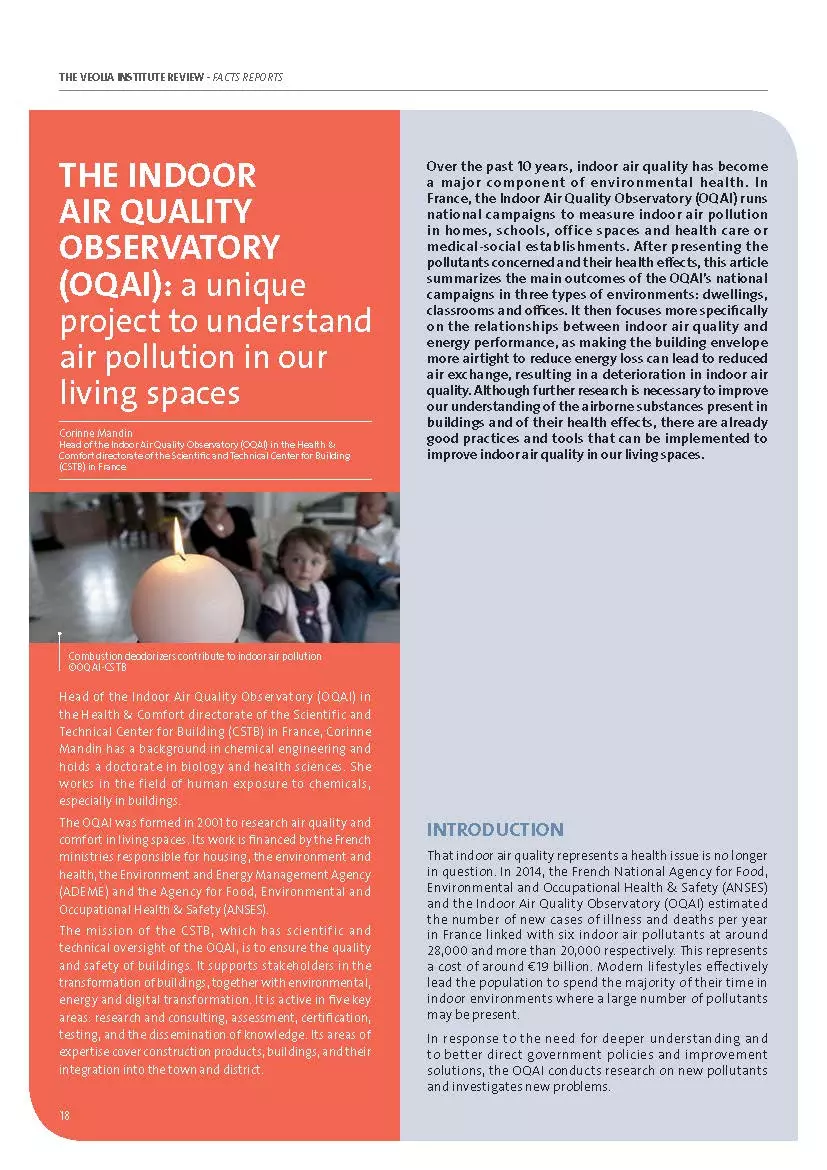Corinne Mandin
Head of the Indoor Air Quality Observatory (OQAI) in the Health & Comfort directorate of the Scientific and Technical Center for Building (CSTB) in France
Over the past 10 years, indoor air quality has become a major component of environmental health. In France, the Indoor Air Quality Observatory (OQAI) runs national campaigns to measure indoor air pollution in homes, schools, office spaces and health care or medical-social establishments. After presenting the pollutants concerned and their health eff ects, this article summarizes the main outcomes of the OQAI’s national campaigns in three types of environments: dwellings, classrooms and offi ces. It then focuses more specifi cally on the relationships between indoor air quality and energy performance, as making the building envelope more airtight to reduce energy loss can lead to reduced air exchange, resulting in a deterioration in indoor air quality.
Although further research is necessary to improve our understanding of the airborne substances present in buildings and of their health effects, there are already good practices and tools that can be implemented to improve indoor air quality in our living spaces.



